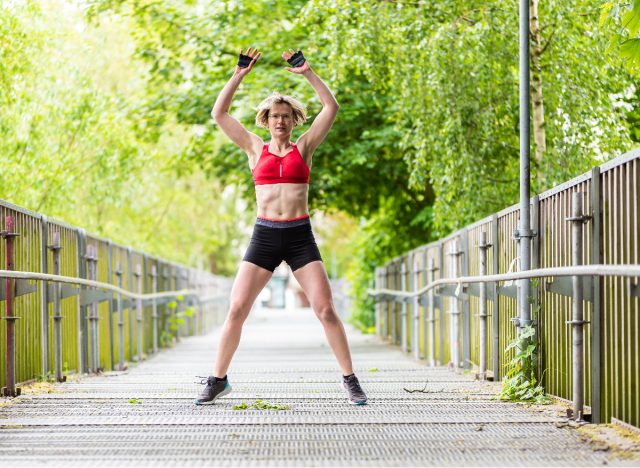If You Can Do This Many Jumping Jacks After 60, Your Body Is Fitter Than Most

Jumping jacks look simple, but they reveal a lot about how strong your heart and lungs still are. The move challenges endurance, rhythm, and coordination. All vital markers of youthful vitality. After 60, keeping your cardiovascular system sharp means you recover faster, move easier, and feel lighter on your feet. The number of jumping jacks you can perform shows just how efficiently your body uses oxygen and energy.
Each repetition forces your heart to pump harder and your muscles to stay synchronized. That combination strengthens circulation while improving your body’s ability to regulate breathing under effort. Done correctly, jumping jacks offer a full-body workout that blends power, agility, and endurance. Your stamina reflects not just fitness, but how well your body resists the wear of time.
This isn’t about speed or flash, it’s about control and consistency. Jumping jacks train rhythm, coordination, and balance while keeping your metabolism high. Whether you’re testing yourself or just checking in on your conditioning, this simple drill paints a clear picture of your cardio health after 60.
How Many Jumping Jacks Show Strong Cardio After 60
Completing 50 to 60 continuous jumping jacks puts you in a solid fitness range for your age. That number shows your heart and lungs work efficiently and that your coordination remains sharp. Reaching 75 or more without losing rhythm marks exceptional endurance and aerobic strength, placing you well above average for your age group. Even 30 clean, controlled reps signal solid cardiovascular health if performed with steady breathing and good form.
The key lies in rhythm, not recklessness. Rushing leads to form breakdown and fatigue, while steady pacing helps your heart adapt to the effort. The more consistently you can maintain your tempo, the better your cardiovascular endurance truly is. Every extra set or smooth repetition means your body handles stress and recovery like someone years younger.
What Your Results Say About Your Heart and Lungs

Strong performance in jumping jacks means your heart and lungs still communicate seamlessly. Your body delivers oxygen efficiently, your heart rate rises and settles quickly, and your muscles use energy without early fatigue. That kind of responsiveness reflects youth at the cellular level, it shows your cardiovascular system remains adaptable and resilient.
If you feel winded early or lose rhythm, it doesn’t mean you’re out of shape, it means your endurance foundation needs reinforcing. The beauty of cardio conditioning is how fast it responds to consistency. Training your heart daily, even in small doses, builds measurable progress in just weeks. When your breathing stays controlled and recovery shortens, you’re rewiring your body to perform like it did years ago.
How to Improve Your Jumping Jack Count

Start by setting a realistic baseline and perform as many controlled reps as possible before your form slips. Focus on soft landings, upright posture, and steady breathing. If traditional jumping jacks feel too intense, begin with half-jacks, where you lift one leg at a time, or low-impact side taps to condition your body gradually.
To build endurance, mix in interval rounds of jumping jacks for 20 to 40 seconds, followed by short rests. Supplement your training with walking intervals, marches in place, or step-ups to strengthen your legs and lungs together. Aim to add 5 to 10 more jumping jacks each week while maintaining perfect rhythm. Over time, your coordination sharpens, your recovery quickens, and your cardio health starts to mirror someone decades younger.